VISIT TSUMAGO ALONG NAKASENDO [JAPAN GUIDE]

WHAT ARE THE BEST THINGS TO SEE IN TSUMAGO? WHAT IS TSUMAGO KNOWN FOR?
When you arrive in Tsumago in the Nagano Prefecture along the legendary Nakasendo Way, time seems to rewind and you rediscover all the charm of ancient Japan.
The dark wooden buildings stand tall. Narrow alleys. No telegraph pole or television antenna in sight. The locality has made it a point to preserve a traditional setting, authentic as in the time of the samurai who visited Tsumago hundreds of years ago.
Tsumago is one of the best places to visit along Nakasendo Way!
In this guide, we describe everything you need to know to prepare for your visit to Tsumago in Japan!


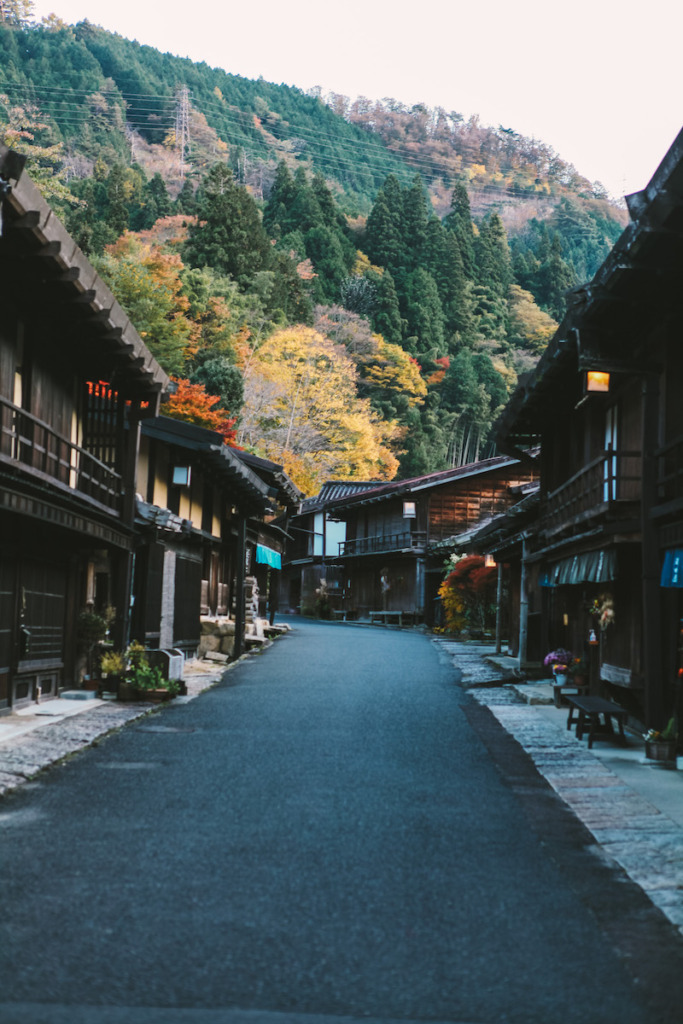
In A Nutshell:
– Tsumago is located on the historic Nakasendo route connecting Kyoto and Edo during the Edo period.
– We first learned about Nakasendo while watching a documentary about Joanna Lumley in Japan. You can find it on Netflix.
– It takes about 1 hour to visit the village.
– You should combine your visit of Tsumago with Magome
HERE IS A GLIMPSE OF THE CHARMING TUSMAGO:
BRIEF HISTORY ABOUT NAKASENDO AND TSUMAGO
The Nakasendo Way, a legendary route

The Nakasendo or “Central Mountain Road” was one of the five main roads of Gokaido serving the ancient city of Edo. The path wound through the Japanese Alps, a distance of 534 km, between Edo and Kyoto.
Lords, samurai, porters, merchants, etc. used the Nakasendo for centuries. Over time, post towns were created to provide accommodation for travellers. These historical stages where the inns continue to receive today hold an important role in the preservation of the history and culture of the region.
The first weekend of June is the Ochasubo dochu festival. This tradition dates back to the Edo period, when all the local daimyō met in Kyoto and went on a procession to Edo, using the Nakasendo, to offer tea to the Shogun. The event and the parade take place in a new form these days but still remember this tradition!
Tsumago, one of the most beautiful post towns on the Nakasendo Way

Tsumago is was once a very wealth post town.
During the Edo period, it was the 42nd relay among the 69 postal towns of the Nakasendo which linked the capital Edo to Kyoto.
The decline of the Nakasendo Way and all its post town came after the creation of the Chuo Main Line which bypassed it. Tsumago slipped away, its economy sank and much of its infrastructure fell into disrepair…
However, from 1950, the inhabitants decided to restore the image of their city. They joined forces to rehabilitate Tsumago’s historic sites and buildings.
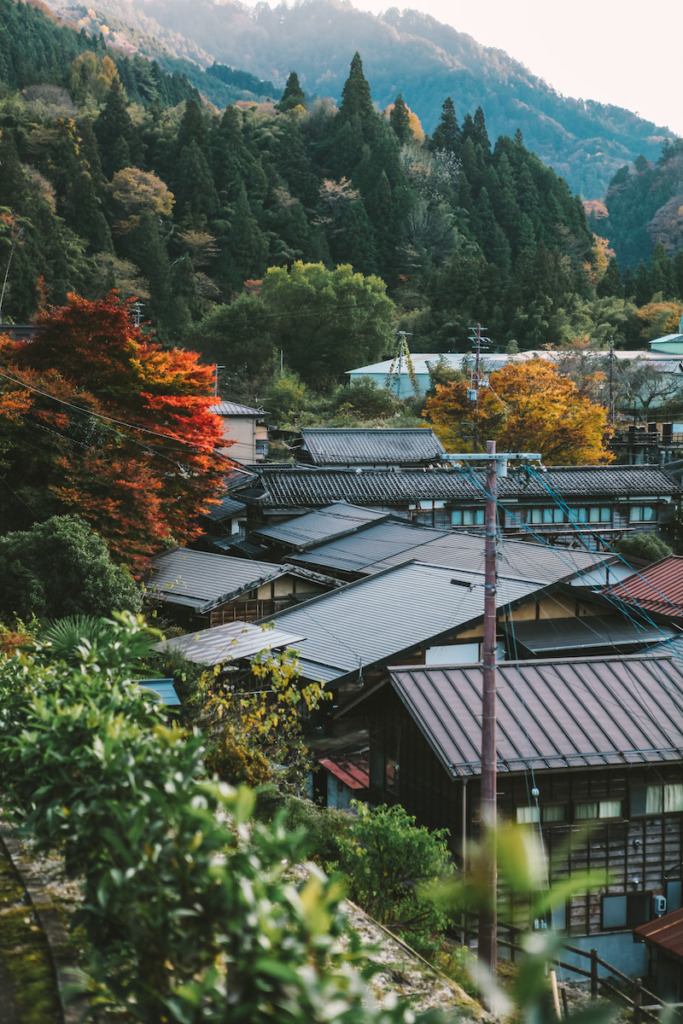
In 1971, they managed to restore about twenty houses and to establish a charter with the government according to which no place in the locality could be “sold, rented or destroyed”. Finally in 1976, Tsumago received the status of an Architectural Preservation Site of Japan.
For us Tsumago, along Narai Juku (READ: FULL GUIDE TO VISIT NARAI-JUKU) and Magome (READ: TRAVEL GUIDE FOR MAGOME) are the most charming post towns along Nakasendo! The 3 of them are a must-see if you visit this part of Japan!
Best Things to See in Tsumago
1. Stroll through Tsumago’s main alley
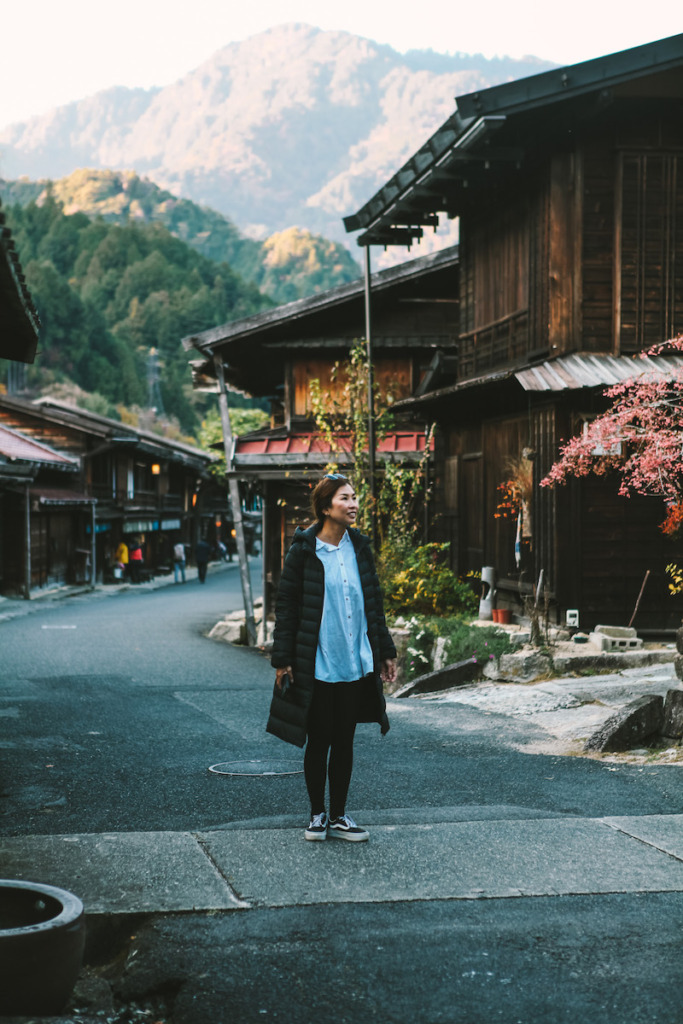
Like in most post towns along Nakasendo, the main alley is the most important attraction! Take your time to stroll through Tsumago’s main alley, and think about what it must have time at the time of the Samurai!
In Tsumago, some old buildings now serve as traditional inns, others house shops and restaurants where you can find a bit of everything: soba noodles, Japanese sweets, sake, etc.

Take advantage of your trip to taste the specialties for which the Kiso Valley is famous for, in particular kuri (Japanese chestnuts) and gohei-mochi cake.
We love Tsumago.
We came twice during our trip to Japan, as we really wanted to enjoy every single parts of this charming town!
2. Visit the Nigaso History Museum in Tsumago

To learn more about the history of the region, visit the Nagiso History Museum!
The History Museum offers several floors to discover the history of the Kiso Valley but also jukus. This is one of the best things to visit in Tsumago!
3. Visit famous ryokans in Tsumago

Discover Tsumago’s historic ryokans: Honjin (location). The Honjin was the city’s main inn in the Edo period. The original building having been destroyed, it is a faithful reconstruction carried out in 1995.
On the other hand, the building of the Waki-Honjin secondary inn has survived the ages and received the nomination of Important Cultural Property in 2001.
Okuya, the waki-honjin (脇本陣奥谷) of Tsumago is an original building which during the Meiji period embellished its architecture and its park among other things by planting Japanese cypresses, a noble tree that only nobles were then authorized to plant.
During the visit, you will be told the history of the village, a good way to immerse yourself in the world of Edo.
4. Check out Kabuto Kannon Shrine
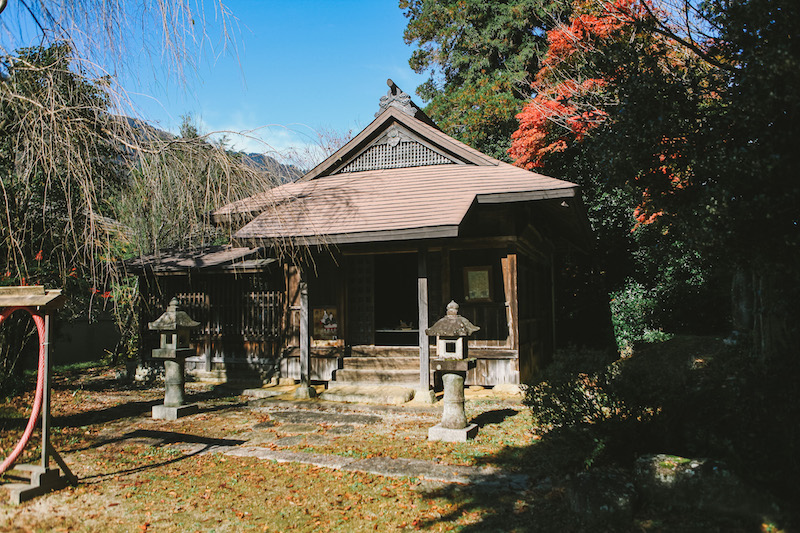
Do you like visiting Japanese temples? Kabuto Kannon Shrine is a place not to be missed. Built towards the end of the 12th century, the place enshrines the samurai Minamoto no Yoshinaka, nicknamed the “General of the Rising Sun”, who erected a citadel in Tsumago.
The temple is located a bit outside the historical town, you will need to walk about 30min to get there along the Nakasendo Way.
Location: here
5. Another beautiful temple to visit in Tsumago is Kotoku-ji
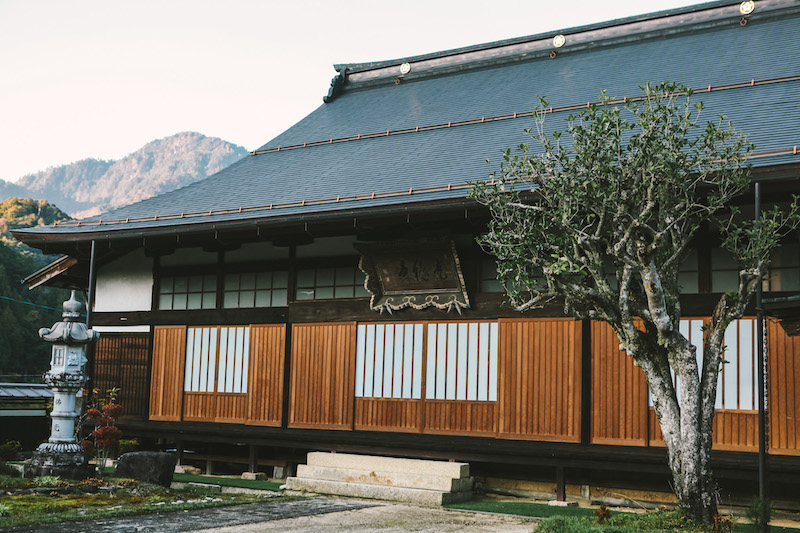
Do not miss the Rurisan Kotoku-ji temple which overlooks the majority of village of Tsumago.
You will easily recognize it with its white facade and stone base.
The temple was established in 1500 and its main deity was established in 1599. At the front of the monument, you will find a 500-year-old weeping cherry tree, a good spot for taking photos.
Location: here
6. Visit Tsumago Castle Ruins

If you decide to walk to Kabuto Kannon Shrine, then make sure to stop about mid way to the Tsumago Castle Ruins.
Indeed, Tsumago once had its own castle, but now only the ruins remain.
In the Edo period, the monument erected at the top of the mountain offered a splendid view of the locality and the neighboring village of Midono-juku.
The castle was the scene of a major war in 1584, then was dismantled at the beginning of the 17th century after the declaration of the rule “one country, one castle” during the Genna era.
Location: here
7. Check out the well-preserved notice board

Like in Narai-Juku and Magome, you can see the old notice board at the entrance of the village.
These kinds of notice boards can be found in all the post towns along the Nakasendo Way. The boards list the regulations from the shogunate authorities to the villagers. The boards are known as the kosatsuba.
Location: here
8. Enjoy some soba noodles
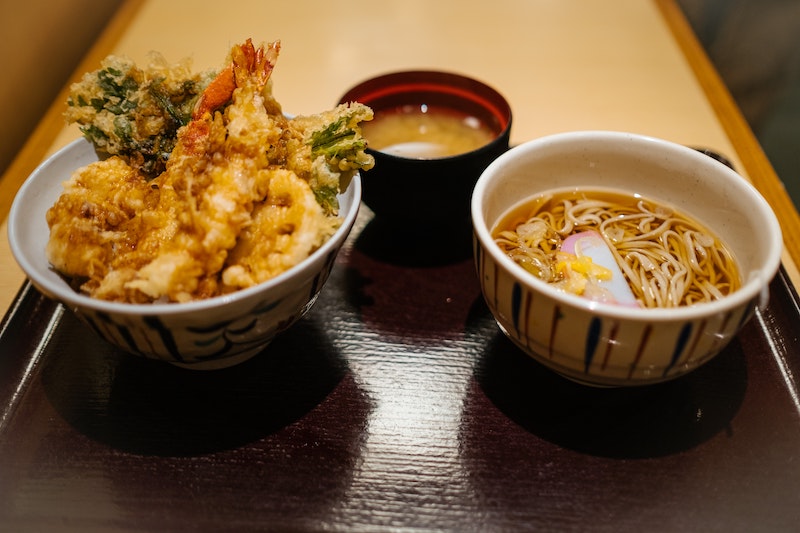
This part of Japan is very well known for its delicious soba noodle. If you are visiting Tsumago make sure to stop at one of the many traditional restaurants to enjoy their delicious soba noodle!
It is also a great way to explore the interior of one of these traditional houses!
Our recommendation is Fujioto restaurant, the setting with the garden is stunning, and the food is delicious (location). Fujito is also an inn where you can spend the night!
9. Walk on Momosuke Bridge near Tsumago


Between Narai-Juku and Tsumago make sure to stop at the impressive Momosuke Bridge!
This is a picturesque bridge where you can take some amazing photos! There’s also a small, quiet park under the bridge with some picnic benches and tables. You can even play mini golf there if you bring your own equipment.
Location: here
10. Check out the beautiful watermill in Tsumago

In most post towns you can observe beautiful and scenic Watermill (location). The same goes for Tsumago, at the edge of the village check out the gorgeous watermill. Not too far from the watermill you can also observe the famous Carp Rock.
This rock used to be shaped like a carp. Unfortunately, the rock broke into few pieces some time ago… (location)
Useful information about Tsumago
When is the best time to visit Tsumago?

Like the rest of Japan, the city of Tsumago is most beautiful during the spring season (March to May), when the many flowers bloom, and in the fall (September to November) when the rich foliage is full of colors.
If you plan to walk the Nakasendo, the summer period offers good conditions, but it can be very crowded. To avoid the crowds, plan your trip to Tsumago in May or October.
Many events are held in Tsumago throughout the year.
On November 23, residents organize a parade reenacting a procession dating from the Edo period. Monks, samurai or palanquin bearers, and traditional costumes are in the spotlight during this great parade.
On the fourth Saturday of August, a fire festival is held in the remains of Tsumago Castle, with Kiso dance performances.
READ: WHEN IS THE BEST TIME TO VISIT JAPAN?
How to get to Tsumago?

The nearest station is Nagiso Station, which is connected to most major cities in Nagano Prefecture and major cities in Japan.
From Tokyo, board the Tokaido Shinkansen towards the city of Nagoya. From there, take the Shinano Express to reach Nagiso.
Tsumago is located about ten minutes by bus from the station.
Remember to buy your JR PASS when traveling by train to Japan, you will save lots of money! BUY IT HERE.
How to get around in Tsumago?
Good news, it’s all within walking distance. You can visit Tsumago on foot.
Staying overnight?


Why not stay overnight in Tsumago? After 5 pm you will have the entire place more or less to yourself as all tourists tend to leave before 5 pm.
There aren’t many places to stay in Tsumago, however, we recommend the lovely Fujioto inn. You will be staying in a traditional inn, feeling like a samurai hundreds of years ago (location)
Other things to see near Tsumago?
Narai-Juku
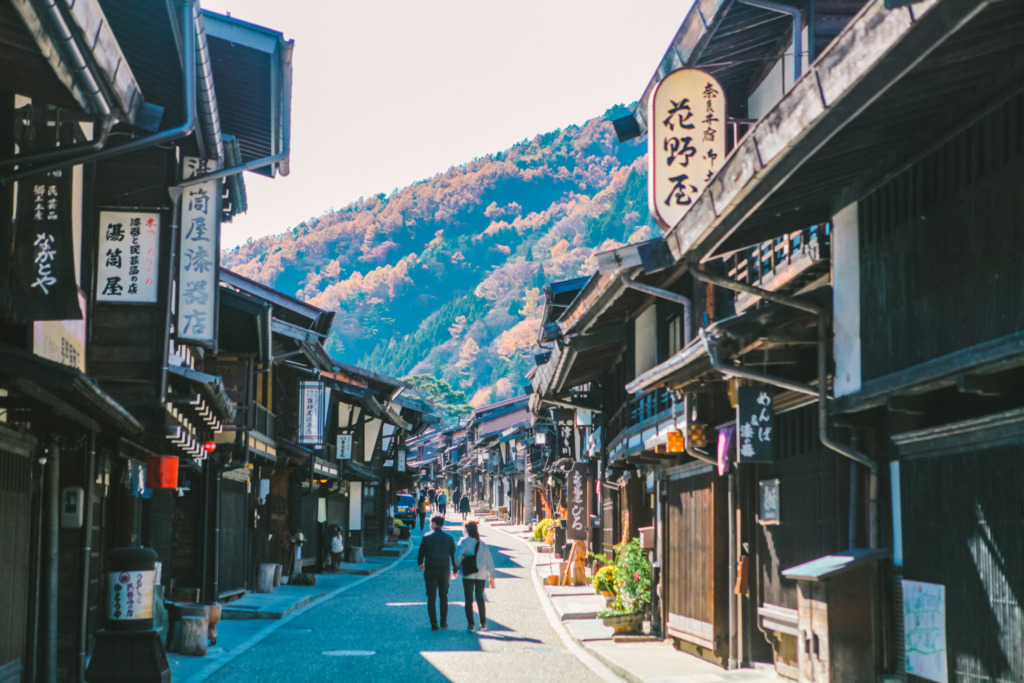
Discover a well-preserved heritage former post town on the famous Nakasendo Way! Narai-Juku, located in the beautiful Kiso Valley, is perhaps less well-known than Tsumago and Magome which are on the same historical path. However, it is one of the most beautiful places along the Nakasendo Way!
Our visit to Narai-Juku was magical! We felt transported in the past, during one of the most beautiful era of Japan! We absolutely love Narai-Juku and highly recommend that you stop by for a visit.
READ: FULL GUIDE FOR A VISIT TO NARAI-JUKU
Magome

Magome is a village nestled in the Kiso Valley along Nakasendo. The village rises to 801m above sea level. It is a former post town exactly like Tsumago and Narai-Juku.
Actually, out of the 3 post towns, Magome is actually our favorite one! This town is so beautiful. This is what Japan is all about for us. We would easily rank Magome as one of the best things to see in Japan!
With its charm, its fascinating landscape, its cobbled and authentic streets and its welcoming locals, Magome is a fantastic place to visit.
READ: FULL TRAVEL GUIDE FOR MAGOME
HIKE BETWEEN TSUMAGO AND MAGOME

While it is possible to hike many parts of the Nakasendo Way, one of the most beautiful segments is between Tsumago and Magome.
The 9 km journey will take you about three hours of walking. Along the way, you will have the opportunity to contemplate splendid cypress forests as well as enchanting villages.
Two picturesque waterfalls are also to be discovered in the vicinity of the city of Tsumago: Otake and Medaki. These idyllic waterfalls were once used as separate natural baths, hence their nicknames ‘Men’s Falls’ and ‘Women’s Falls’.
Make sure to also visit the famous Tateba Tea House!
We actually started the hike at Nagiso. This is where the closer train station is located. Instead of taking the bus and start your hike to Tsumago, count 1 more hour from Nagiso. On the way you will be able to pass many shrine such as the Kabuto Kannon and the Tsumago Castle Ruins!
This is one of our favorite hike on the Nakasendo Way! We highly, highly, HIGHLY (!) recommend it 🙂
READ: FULL GUIDE FOR HIKING BETWEEN MAGOME AND TSUMAGO
Kiso Valley

The Kiso Valley lurks along the Japanese Alps and the Kiso River, between Nagano Prefecture and Gifu. Its secular atmosphere contrasts with the wild authenticity of its landscapes, an ode to time travel for visitors.
Between imposing cliffs, the Kiso Valley stretches 52 km from east to west and 63 km from north to south. Its landscape dominated by lush vegetation and majestic mountains is a real natural treasure.
The valley is crossed by the old trade route of Nakasendo. The Kisoji section, which stretches for a distance of 70 km.
The Kiso Valley is home to around 11 towns called “juku” or post towns whereby Magome, Tsumago, and Narai are the best preserved.
Final thoughts – Is Tsumago worth visiting?
Tsumago was the first village along the Nakasendo Way to protect its heritage. Thanks to this early initiative, Tsumago is well-preserved and simply beautiful!
Visiting Tsumago is fantastic, and worth it! This is the part of Japan we like the most. The most authentic, original, and where you can feel the spirit of ancient Japan and the Samouraï!
Spending the night at one of the post towns along Nakasendo is also a magical experience! When night falls, the lamps in front of each house are lit, creating a truly charming landscape.
We hope that you found this post useful to help you prepare for your trip to Japan. We wrote many other posts about Japan here.
Related posts
- GUIDE FOR A VISIT TO NARAI-JUKU
- FULL TRAVEL GUIDE FOR MAGOME
- HIKE ALONG NAKASENDO [TRAVEL GUIDE]
- 15 BEST THINGS TO SEE IN HAKONE NEAR MT. FUJI
- BEST THINGS TO SEE IN THE JAPANESE ALPS
- 15 INCREDIBLE THINGS TO SEE AT LAKE KAWAGUCHI
- OBUSE, A BEAUTIFUL TOWN IN JAPAN WORTH A VISIT
- 10 BEST THINGS TO SEE IN MATSUMOTO
- 15 BEST THINGS TO SEE IN TAKAYAMA
- FULL GUIDE FOR VISITING HAKUBA IN JAPAN
- DISCOVER LAKE YAMANAKA NEAR MT. FUJI


![HIKING LITTLE ADAM’S PEAK IN ELLA, [SRI LANKA]](https://afuncouple.com/wp-content/uploads/2022/09/Little-Adams-Peak-Hike3-768x512.jpg)
![10 BEST THINGS TO DO IN PERERENAN [BALI GUIDE]](https://afuncouple.com/wp-content/uploads/2023/07/Best-things-to-do-in-Pererenan-in-Bali-15-768x512.webp)
![JEJU MAZE PARK IN GIMNYEONG [COMPLETE GUIDE]](https://afuncouple.com/wp-content/uploads/2021/05/Jeju-Maze-Park-Gimnyeong-12-768x512.jpg)

![10 BEST THINGS TO SEE IN TAI O VILLAGE [HONG KONG]](https://afuncouple.com/wp-content/uploads/2022/10/Tai-O-Village-in-Hong-Kong-34-768x512.jpg)